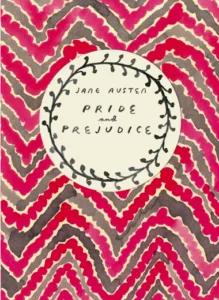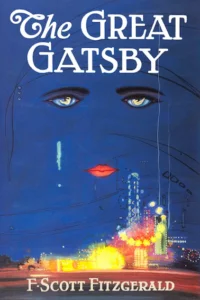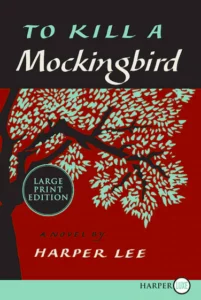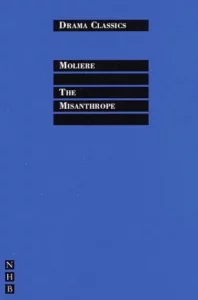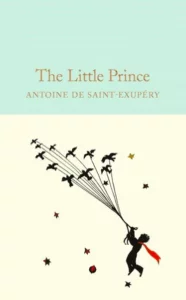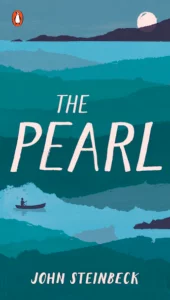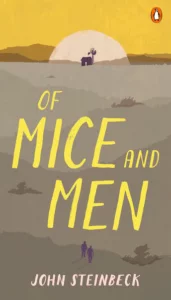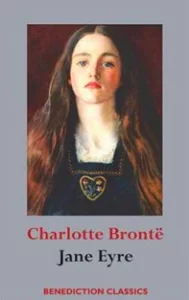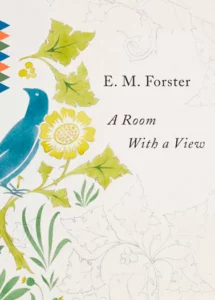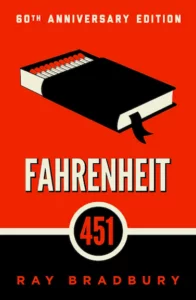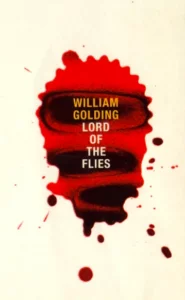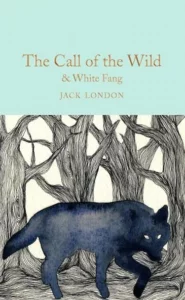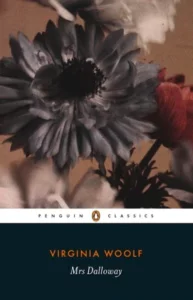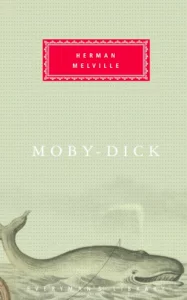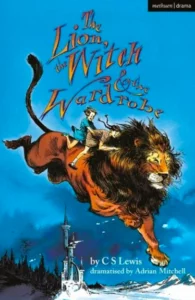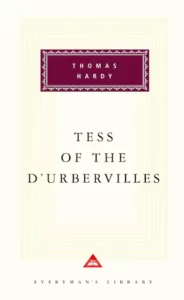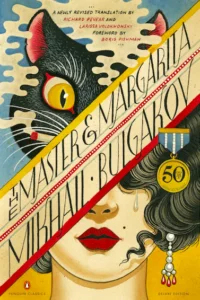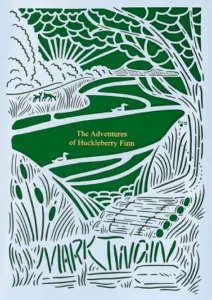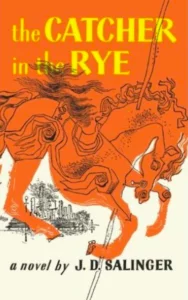
Best Short Classic Books to Read (If You Have no Time to Read Serious Volumes)
Some say that in modern realities taking time to read classical literature is a luxury available to those who do not work full-time. Others are convinced that written centuries ago novels are irrelevant. However, contrary to such popular opinions, the benefits of reading classical literature still prevail.
Classic literature works do not only belong to libraries and are not only appreciated by academic scholars. Besides valuable knowledge and excellent storytelling, it is proven that reading classical literature exercises your brain, expands vocabulary, improves memory and even reduces stress. Another factor that makes more minds turn to classical literature is a desire to appear as a well-read person to converse with anyone, whether an English professor or a bookish friend.
At the same time, returning back to the first argument, there is no denial that only a few of us have enough time to read a thousand-page volume (although War and Peace by Leo Tolstoy is definitely worth it).
Fortunately, fine classical volumes come in various lengths. This list of short classics includes books you can read in a few days or a few hours while relaxing after work. From the well-known The Great Gatsby to John Steinbech’s The Pearl, each book offers valuable lessons and covers topics on human nature, its darkness and kindness, social issues, marriage, love and more. What else could be a better conversational piece?
While some of those books have around 300 pages, most of the stories are 200 pages or less, and they do not only include 18th and 19th-century classics, but also more modern fiction.
Read more: The Best Books Guides
Pride and Prejudice by Jane Austen
The first time I read Pride and Prejudice was back in grade eight. Since then, I occasionally come back to this novel, hoping to find new angles in the story. Frankly, it never disappoints. The older I get the more relevant the story becomes.
Jane Austen is a universally acknowledged author who crafted charming and humorous stories of love. Besides, she offered a very modernized view of family issues and the social status of a woman in search of a handsome husband with good fortune.
This sentence, ‘No sooner had he made it clear to himself and his friends that she had hardly a good feature in her face than he began to find it was rendered uncommonly intelligent by the beautiful expression of her dark eyes …’ shows wit and intelligence of the writer.
If you are unfamiliar with this classic tale of Elizabeth and Mr. Darcy, (although it is challenging to wrap it up in two sentences), it is a comedy where mutual disdain eventually turns into a romance. In the beginning, a bachelor Fitzwilliam Darcy is indifferent to Elizabeth Bennett’s good looks and lively mind. She thinks him arrogant and self-centered. Through the development of the story, Austen shows the absurdity of judging by first impressions, destructive energy of gossip and snobberies of provincial middle-class life.
The Great Gatsby by F. Scott Fitzgerald
Jay Gatsby is full of contrasts: a mysterious millionaire who throws decadent parties, and a man in love with the woman from his past. Those contrasts make him one of the most devastated characters ever described.
At the same time, a new acquaintance of his, Nick Carraway, drawn by charisma and decadence of parties is the only way Jay can approach his dream to be with Daisy. The story ends tragically. Yet, it unravels so much more than dreams pursuit.
The Great Gatsby by F. Scott Fitzgerald reflects on the hollowness at the heart of the American dream. It has both, tragedy and hope, sophisticated language, and a simple, yet intriguing storyline happening during the Jazz Age. A story that is still relevant.
To Kill a Mockingbird by Harper Lee
Fiction that covers issues on race and justice did not just begin a couple of years ago. Harper Lee (a Pulitzer-prize winner) wrote a novel ahead of its time addressing issues on race, inequality and the justice system in America during Depression Era.
Atticus Finch is determined to defend Tom Robinson, a black man who has been accused of raping a young white woman. While he struggles with the justice system, the other side of the story unravels the world of Atticus’ daughter. A coming-of-age point of view from one side, and a darker drama about the consequences of racism from the other, is the story of good and evil’s coexistence.
In To Kill a Mockingbird, Harper Lee uses the young eyes of Scout and Jem Finch to explore the irrationality of adults’ attitude to race and class.
As one reader noted, To Kill a Mockingbird by Harper Lee changed her life. It made her aware that the colour of one’s skin can be enough for someone to hate you, that truth and justice wasn’t always going to be fair.
The Misanthrope by Moliere
Besides reading famous classic novels, consider adding plays to your list. The Misanthrope by Moliere, (translated by Pulizter Prize-winner Richard Wilbur), tells a story about a man who tells the harshest truth to everyone but himself, in a poetic form. It is a fairly short play filled with hilarious observations about the pretentions that could be found in us all.
The Misanthrope offers a humorous look at the absurdities of human nature. Molière created a character, a man quick to judge others but blind to his own flaws, making him a reflection of French Aristocracy, and people in general.
The Little Prince by Antione De Saint-Exupery
If you want something really short to read, that is neither a novel nor a play, The Little Prince by Antoine De Saint-Exupery is a short-illustrated classic that is loved by both children and adults alike. Reading it as a child you pick up some general sense of the adventures of the main character and his wise companion the Little Prince. Reading it as an adult you pick up philosophies in between simple, yet beautifully written lines.
The short allegory follows the Little Prince who left his tiny planet and went on to discover the universe. He lands on Earth and learns of the absurdities of the grown up’s world.
A reader rightly said that even now, over twenty years later ,it is still something he enjoys reading on occasion because it has great life reminders that are important not to forget.
The Pearl by John Steinbeck
One of John Steinbeck’s finest works, The Pearl teaches about greed and envy that human nature is prone to. Kino’s luckiest day was when he found the perfect pearl. The poor diver believed his luck changed, yet his life turned quite the opposite.
The story of Kino, Juana and their baby son is based on a Mexican folk tale. It explores the darkest secrets and depths of evil, desires and passions along with endless possibilities of all covering love.
It is a jewel of a book, said a reader. Everything that Steinbeck wrote is worth reading, she added.
Of Mice and Men by John Steinbeck
Another story by John Stenbeck, Of Mice and Man, will break your heart to pieces. It follows George and Lennie as they work towards a dream—to own a ranch of their own. They work hard, saving a little by little until they get an offer to work on a California ranch. Joyful at the beginning, two friends stumble against the reality, of unfair treatment and racism, as the story progresses.
George and Lennie represent two types of people. The first one is a leading, protective friend, and the second one is a loyal follower, kind, and supportive, yet totally docile. However, even such bondage cannot protect the weaker party from the provocations of a flirtatious woman. It also could not predict the consequences of Lennie’s obedience to the things George taught him, and where they both ended because of it.
Jane Eyre by Charlotte Bronte
Jane Eyre is a much longer volume than previously mentioned Stenbech’s stories. However, it is easy to read one (compared to Dickens’ novels). It is a masterly written story about a young woman overcoming many struggles.
As one reader noted, Jane Eyre a great read for anyone, who loves classic English literature or would like to give this era (19th century) and genre a try. Not to give up too much about this story, Jane is a likeable character, who tries to make the best of her situation and shows great strength of character. Even though this is a story about love, poverty and the higher class of her generation, it is not too “cheesy”, the reader added. Charlotte Bronte was able to create a world that is richly described and easy to follow. The plot is not too far-fetched and the characters have depth and dimension.
Published in 1847, Jane Eyre soon became an epiphany of a woman with strong principles and endurance. She emerged unbroken in spirit and integrity despite her traumatic childhood, shattered hopes, dark secrets and losses. Although the book creates a portrait of a woman living conventional Victorian lifestyle, in her search for a grander purpose she is one of us, women of the modern generation.
A Room with a View by E.M. Forster
Reflecting on Edwardian Age customs, E.M.Forster creates a character who is debating an escape from that world. Lucy’s life is planned and peaceful. Marry a respectable man. Live in England. However, once she travels to Italy with her cousin, Lucy’s perception of her lifestyle changes. She witnesses an explosion of colourful streets and characters, and one in particular, a passionate George who is so different from her fiance.
A Room with a View reflects on gradual societal change and the beginning of modernization. However, the story is not only about the clash of the old and the new. It is a social comedy. As one reader observed, in A Room with a View, there is much to have a chuckle at. With romance thrown in as well, this is well worth reading, by men and women alike, he observed.
Fahrenheit 451 by Ray Bradbury
Many of us read this short classic in high school, yet it does not mean Fahrenheit 451 is not worth rereading. What strikes the most is the prophetic plot. Ray Bradbury creates a society where printed books are considered dangerous. Fahrenheit 451’s main character Guy Montag is a fireman whose job it is to search out and burn books. He is quite satisfied with his job, until the day he begins to question everything. Until the day he starts reading.
This novel is Ray Bradbury’s warning against the dangers of censorship and addiction to television.
Through all of the metaphors, complications, and similes, Fahrenheit 451 is an excellent book to read, a satisfied reader observed. In order to get anything out of this book the reader really had to read closely to understand what Bradbury was trying to communicate to the reader, he added.
Lord of the Flies by William Golding
Lord of the Flies by William Golding is another classic read that is often a part of a school program. The story begins with a group of English schoolboys left on a deserted island. They attempt to establish some sort of civilized society. However, dark side of human nature prevails and comes out in all its ugliness.
A reader noted that Golding’s prose is extremely polished and there are numerous passages abundant in imagery that reflects the state of society the boys find themselves. Golding is particularly adroit at juxtaposing the seemingly idyllic island with the anarchic primitivism of the boys, she observed.
The Call of the Wild by Jack London
The Call of the Wild was one of my favourite books as I was growing up. Adventures of a dog named Buck, and vivid descriptions of the Alaskan wilderness stirred my mind and made me imagine myself as part of the story.
The author writes from his own experience as a gold prospector in the Canadian wilderness. Jack London explores both relationships between men and animals, and their struggle to survive in the wild.
He masterly crafts scenery of extreme cold and silence of the mountains, while unraveling travels and struggles where humans’ behaviour depends on nature’s allowance.
Mrs. Dalloway by Virginia Woolf
Mrs. Dalloway by Virginia Woolf is a vivid portrait of one woman and post-Great War London society. The book covers one day in Clarissa Dalloway’s life. The main character prepares a party, yet her mind is occupied with something else.
That one day sheds light on remembrances of the loves of her carefree youth, her practical choice of husband, and the effect of war on their lives.
Besides, itreveals secrets of a war-ravaged stranger in the park, Mrs. Dalloway’s daughter, and some of her friends. It is an ordinary life described in a moving, artistic way.
Moby-Dick by Herman Melville
Epic and influential, Moby-Dick by Herman Melville is a masterpiece that offers great characters, vivid descriptions, and a captivating plot.
The author studies the nature of obsession through the character of a ship captain in search of revenge. Captain Ahab seeks to slay the white whale Moby-Dick who while ago turned him into an invalid.
Other characters also represent the constant struggle between good and evil. Published in 1851, this book still shows some of the most enduring characters in literature: Quaker First Mate Starbuck, tattooed Polynesian harpooner Queequeg, Ishmael, and others.
Yet, despite the seriousness of their business, Moby-Dick is written with hope and humour, along with poetic descriptions of the raging sea.
The Lion, the Witch and the Wardrobe by C.S. Lewis
The Chronicles of Narnia by C.S. Lewis was one of the most worn-out books in my parents’ home library. As a child I kept reading it until it practically started falling apart. Later on, just like C.S. Lewis said at the beginning of the Chronicles “someday you will be old enough to start reading fairy tales again,” I reread it to find new angles in this allegory.
The Lion, The Witch and The Wardrobe is a timeless tale about Peter, Edmund, Susan and Lucy on wintry adventures in Narnia. It all begins with Lucy coming across the old wardrobe and ending up in an enchanted forest. Eventually, Lucy and her siblings meet magical creatures, fauns, dwarves and talking animals that are suffering the reign of the White Witch.
But, besides fighting with the Witch, the story has many underlayers. It covers topics of innocence, wonder and most of all sacrifice of the unconditional love of Aslan, the lion who created Narnia.
Tess of the d’Urbervilles by Thomas Hardy
It seems that some of the best classic novels challenge Victorian ideas of sexual morals. Tess of the d’Urbervilles by Thomas Hardy tells a story of a young woman who was wronged and falls under criticism of proper society’s hypocrisy.
Tess must find ways to overcome her family’s poverty, hence she claims kinship with the wealthy D’Urbervilles. At the same time, meeting Alec becomes a drastic point of downfall. Later on, when another man offers Tess salvation and love, she faces a dilemma of revealing her past or remaining silent.
Thomas Hardy reflects on the position of women in society and their constant struggle with frailty and strength.
The Master and Margarita by Mikhail Bulgakov
Stalin censored this book. It was published only after the author’s death, and after that, it only kept gaining value. The Master and Margarita is a novel with a political underline and a plot that is challenging to explain.
It combines criticism of the Soviet government and attempts to introduce ideas of God and morals to citizens living under censorship and propaganda.
Overall, you can expect the devil walking around the streets of Moscow, a massive black cat, the tragic love of the Master and Margarita, and charades performed to deceive naïve people who cannot distinguish good from evil.
The Adventures of Huckleberry Finn by Mark Twain
Another classic story read by school kids, yet also appreciated by adults who decide to reread this heartwarming story. The Adventures of Huckleberry Finn by Mark Twain tells the adventure story of Huckleberry Finn and Jim the slave escape, and their difficulties of fleeing down the Mississippi river on a raft.
A simple adventure for a boy is an actual race of life and death for Jim. Mark Twain covers issues of slavery, abuse and corruption. Yet, despite serious social issues written between the lines, the story has both humour and sadness, well-structured sentences and an intriguing plot.
The Catcher in the Rye by J.D. Salinger
If you read The Catcher in the Rye you might notice how the voice inside your head starts sounding like the main character’s.
Holden has such a chatty, ironic and unique voice that will take a while to forget. He is hilarious, yet mature in his discussions of his parents’ world, school struggles, the streets of New York, and other aspects of his life. Holden wanders aimlessly around the city and plans his next life move, all while trying to find happiness in small joys.
J.D. Salinger’s masterpiece is the story that unravels a tragic loss, as all of experienced in our lives, even if it is only a loss of childhood.
Read more

Things Alexis Mahdavi Can’t Live Without
Here’s everything the Canadian Instagram star carries in his bag.

Things Food Blogger Regina Can’t Live Without
Regina is a food enthusiast who loves to try different local restaurants, cafes, and food festivals.

The Best Non-Fiction to Read
Best non-fiction books to read in 2024 discuss and answer several questions, including race, health, pandemic, travel and more.

Must-haves: Things Andrew Cretaro Can’t Live Without
Here’s everything the Canadian blogger carries in his bag.
